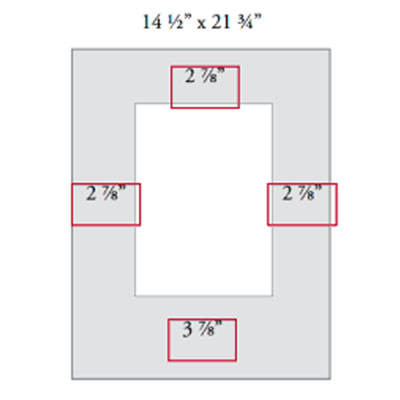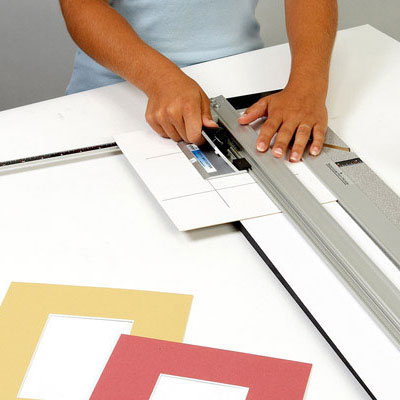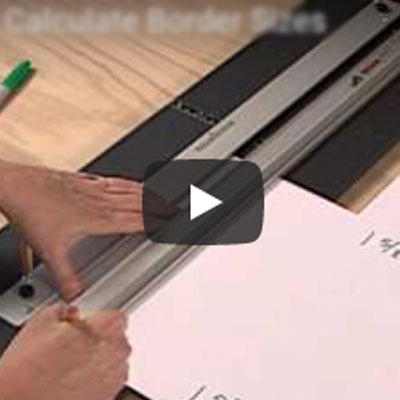Many artists who work on stretched canvas prefer to use a floater frame when framing. A floater frame is fundamentally different than a typical picture frame in that it loads from the front rather than the back. When the canvas is displayed in the frame it appears that the canvas is suspended or "floating" within the recess of the frame.
To use a floater frame for displaying canvas, start by turning the frame over onto its face and measuring down the back of the frame to locate the position of each screw.
You can use screws or nails to hold the art in the frame. If you are using screws, you may want to create a pilot hole, which can be made with a screw, before drilling the hole.
Screws can be turned under hand-strength into most softwood frames, but for hardwood frames, or where you prefer a greater degree of accuracy, you may choose to pre-drill the holes.
After drilling the holes, turn the frame over so it's face up.
When you order a float frame, simply order it to the overall size of the artwork. It will be constructed with proper spacing to allow the art to fit into it with about 1/4" space between the edges of the art and the interior of the frame recess.
Uniform spacing of the canvas within the recess of the frame can be acheived by making wedges out of folded paper and inserting them on each side between the artwork and the inside of the frame recess.
With the canvas loaded into the frame, turn the frame over onto its face and secure the canvas by screwing into canvas through the back of the frame. Use a towel under the artwork to prevent damage to the face of the canvas during this part of the procedure.
One screw on each side should be sufficient to hold the canvas in the frame.
The quarter inch spacing between the edges of the canvas and the interior of the frame recess makes it appear that the canvas is floating within the walls of the recess.
In many galleries floater frames are the preferred method for presenting contemporary art rendered on canvas.












